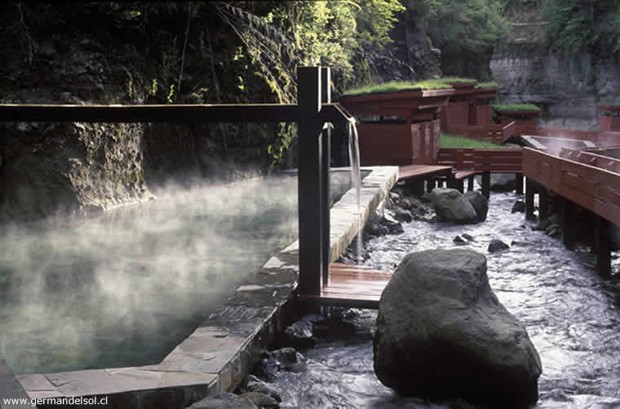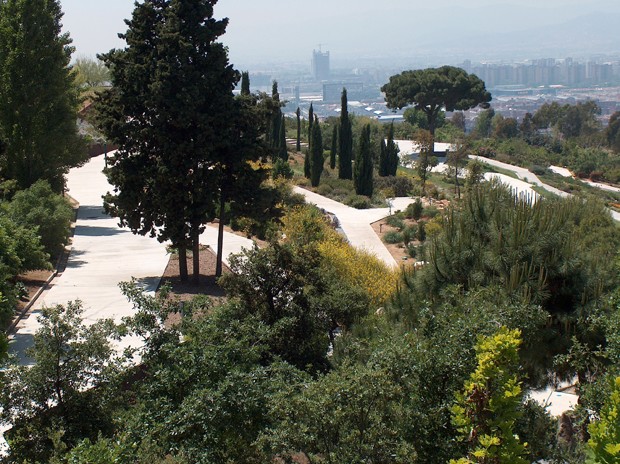Mark Haycox, director of McGregor Coxall, has 22 years experience as a landscape architect and urban designer spanning both the public and private sectors.
Architecture & Design spoke to Haycox about resolving problems with design-led processes, changing procurement methods and how the economic situation in Spain has affected its projects.
You have 22 years' experience in landscape architecture and urban design. What do you think have been some of the most significant changes to the industry during that time?
The most profound change to the industry has been the increased awareness of the environment. Whilst an inherent part of a landscape architect’s training, this broadening of environmental appreciation has influenced change in many areas of what we do. In some respects it has also opened the door for landscape architects.
Coupled with this change has been the increased collaboration between different design disciplines spanning architecture, engineering, environmental and urban design, landscape and industrial design.
Fifteen or so years ago the first generation of comprehensive rating tools such as BREEAM, LEED and GreenStar emerged and drove a lot of change. The integration of these tools in the design process has evolved significantly. Now we see the beginnings of an incredibly exciting period where precincts, districts and city planning is being informed by integrated modeling tools that measure inputs and outputs of city function and inform design and planning decisions.
The critical step is to creatively add value and resolve problems through design-led processes – not just simply rely on the tools to provide the answers, which have occurred in the past.
What is one change you've witnessed that you wish didn't happen?
This is a hard question. Change is constant and most of the time it can be positive. A key area of change that has been challenging is the development of some of the newer project procurement, delivery and management methods.
The reorganisation of roles and responsibilities in project delivery has progressively shifted risk away from the public sector towards the private sector for some highly important work. The impacts of this are manifest in several ways.
Project capital and recurrent costs can rise to cover the risk taken by private sector. This sometimes ends up being underwritten by the public sector anyway and the project still needs public sector overview to ensure performance standards are met. There are also examples of very successful public organisations losing talented people. In-house capabilities are eroded or the skills disappear all together.
I believe the newer delivery methods have merit but they can evolve another step to re-balance how risk is shared. I think there is opportunity to reduce life-cycle costs, improve quality and develop knowledge and capability but this will require more change!
You recently attended the 8th International Biennial of Landscape Architecture in Barcelona. What were some important things you learnt there?
The highlight for me was discussing and learning about the extent of great projects, practice and thinking taking place around the world in landscape architecture. The breadth and depth of work presented at the Biennial illustrated how well landscape architecture is placed to make a serious contribution to tackle the many issues facing the globe, its cities, and regional and rural areas. Creative design-based solutions were employed to resolve social, economic and environmental issues.
There was also simply some beautiful work that made you wonder and dream – have a look at Termas Geométricas in Chile by Germán Del Sol Guzman. The value of great design should transcend the functional resolution of the brief or a particular issue to enable people to see themselves and their environment in new ways.

Termas Geométricas by Germán Del Sol Guzman. Image: German del sol
As part of your trip, you visited projects in Spain. How does the Spanish approach to landscape design compare to Australia's?
I need to be careful here. I have two colleagues from Spain – one is a Spaniard and one is Catalan!
I was very fortunate to visit a few projects in and around Barcelona and also had the privilege of spending a day at Cap de Creus National Park. The park is about 2.5 hours north of Barcelona and very much worth a visit. It is a reference we have looked at for our work along the Shipwreck Coast in Victoria.
Several of the projects I visited oozed a sense of restrained confidence while others were a bit gratuitous and time has not done them any favors. There does seem to be willingness to really push the aesthetic boundaries with many public spaces displaying their own personality and flair. Maybe there is a little bit of Gaudi in every Catalan project?
A key point of difference I noticed was how clear the economic situation in Spain has impacted projects delivered in recent years. The lack of ongoing maintenance and reinvestment can be seen again and again. Some very well known projects like the new Barcelona Botanical Gardens, only 15 years old, and parts of the waterfront area need a bit of care and attention.

Source: Wikipedia Commons
What could Australia learn from Spain?
Whilst Barcelona is referenced again and again for the quality of its urban plan, its pedestrian friendly streets and great public spaces it wasn’t until I spent some time there that I could appreciate this firsthand.
The active contribution of Barcelonès as citizens of their city creates a real energy. Well-planned and mid-rise scaled buildings with a vibrant mix of different uses that edge, address and frame public space are experienced on street after street.
Consistency in scale and materials has created the backdrop for diversity achieved through different uses, architecture, street types and the public life that takes place between buildings. Then there is the pride of the city witnessed through the thousands of Catalan flags that drape windows and balconies.
There were a number of streets being upgraded while I was there. The quality and attention to detail was extremely high.
A co-ordinated approach to upgrading the various below ground services at the same time as the works on and above ground gave a finish and quality often not seen here in renewal projects.
If you could give advice to any landscape architecture students just starting out in the industry, what would it be?
There is a growing need for landscape architects. The skills and approach to thinking that landscape architects bring can be applied to many different areas of work, roles and positions. I think the future for the profession is relatively bright.
I would encourage people to have fun and enjoy what you do. Think about a career and not just a job so that each experience and step builds professional and personal development. Actively manage this.
Play to your strengths, make opportunities and explore every one of them. Put yourself in the position to take opportunities when they come up. Be focused, accountable and proud of what you do.
If you don’t understand something – ask. If you still don’t understand – ask again. Develop a clear understanding of the issues and context regarding a particular task.
As a creative profession – come forward with ideas on how problems can be solved. Be willing to explore and take calculated risks. Be prepared to make mistakes but manage the risks around when and how you make them.
The profession is evolving all the time – push it – take it in new directions.

